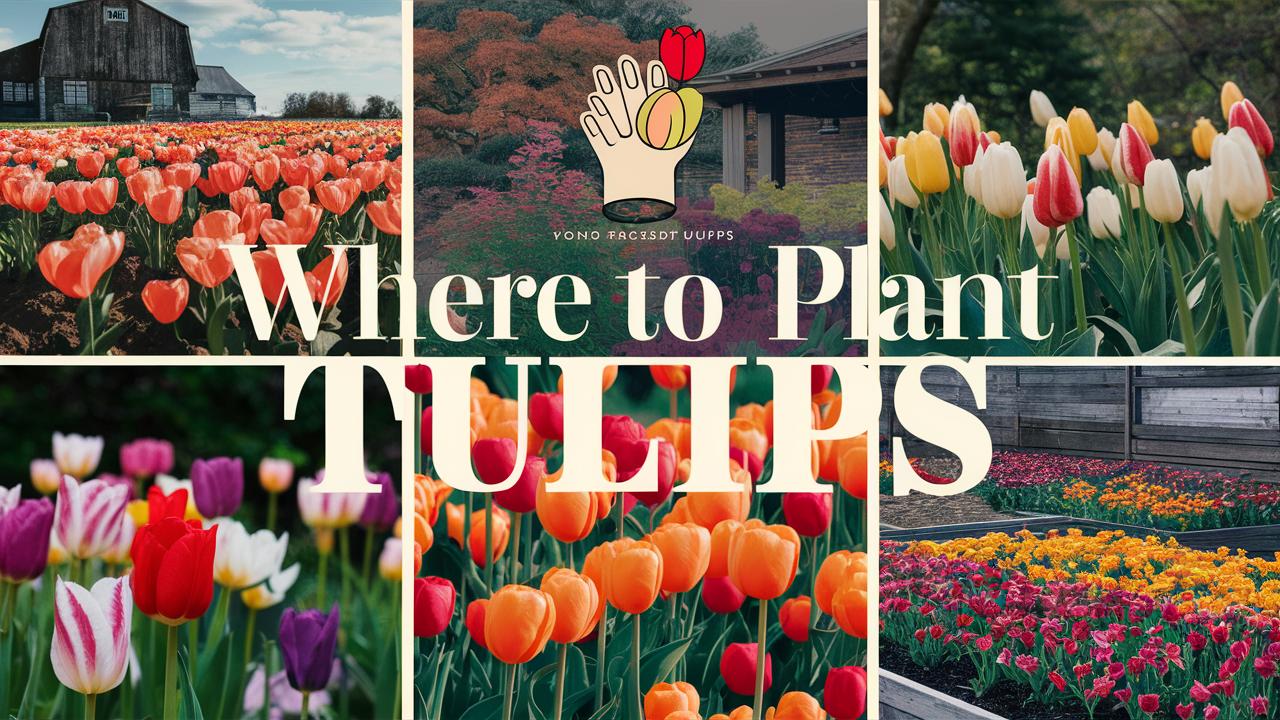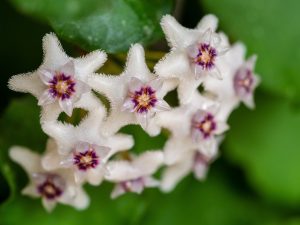In this guide, we will explore a variety of locations, conditions, and techniques for planting tulips successfully.
Why Choose Tulips?
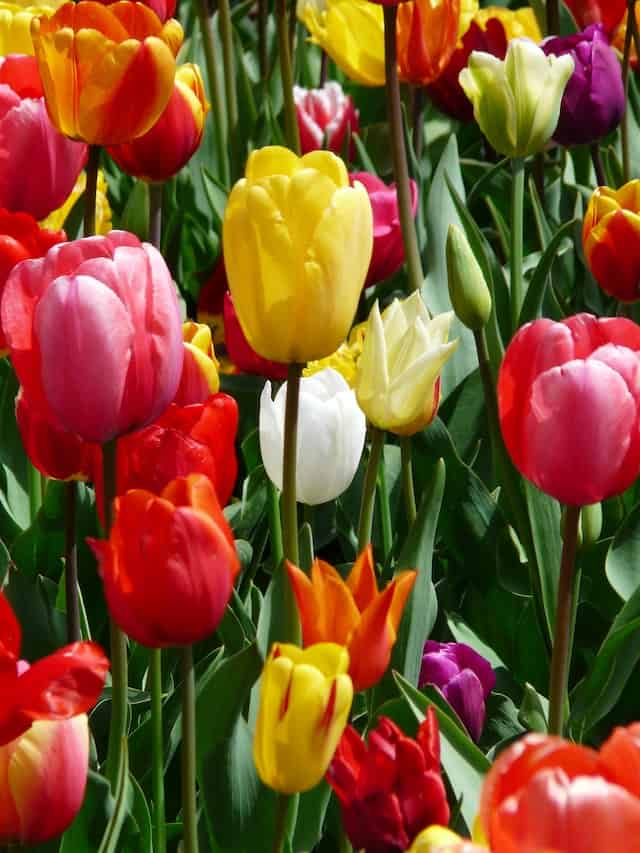
Before we dive into the specifics of where to plant tulips, it’s worth discussing why these flowers are such a cherished choice among gardeners.
Variety: Tulips come in an astonishing array of colors, shapes, and sizes. From striking reds to soft pastels, there’s a tulip variety for every garden aesthetic.
Low Maintenance: Once planted, tulips require minimal care, making them an excellent choice for both novice and seasoned gardeners.
Long-Lasting Blooms: With proper planting, tulips can provide stunning displays from early to late spring, often lasting several weeks.
Easy to Grow: Tulips can be adapted to many different climates and growing conditions, allowing gardeners across various regions to enjoy their beauty.
Now, let’s investigate the ideal locations for planting tulips to maximize their growth potential and visual impact.
Choosing the Right Location
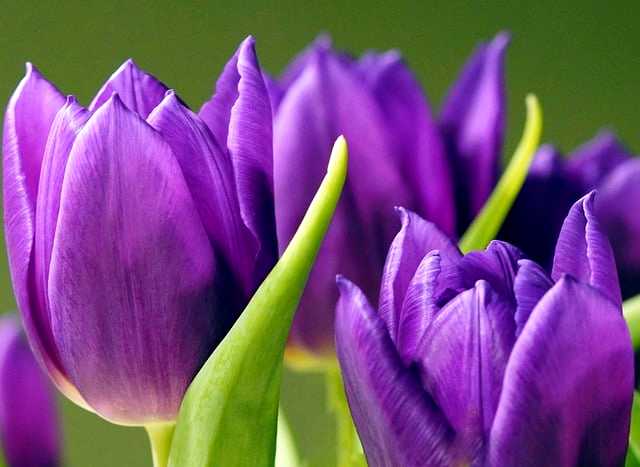
When selecting a location for your tulip bulbs, consider factors such as sunlight, soil composition, drainage, and proximity to other plants. Here are some key aspects to keep in mind:
1. Sunlight Exposure
Tulips thrive in full sun to partial shade. Ideally, they should receive at least six hours of direct sunlight each day. Here’s how to identify the best spots for maximum sunlight:
Southern Exposure: If possible, plant tulips in an area that receives full sunlight, preferably facing south. This exposure encourages robust growth and helps the flowers bloom vibrantly.
Dappled Shade: If your garden has trees or larger plants, look for spots where sunlight filters through the branches. Dappled sunlight can still provide an excellent environment for tulips, especially in warmer climates where too much heat can be detrimental.
Avoid Heavy Shade: Areas consistently shaded by buildings, fences, or dense foliage may inhibit tulip growth. If sunlight is limited, consider planting tulips that are adaptable to partial shade, such as some Darwin hybrid varieties.
2. Soil Quality
Tulips prefer well-draining soil rich in organic matter. Understanding the soil conditions in your planting area is critical:
Soil Test: Before planting, conduct a soil test to determine pH levels and nutrient composition. Tulips prefer a slightly acidic to neutral pH range of around 6.0 to 7.0.
Amending Soil: If your soil is heavy clay or very sandy, consider mixing in compost or well-rotted manure to improve drainage and nutrient levels. This step not only nourishes your tulips but also enhances overall soil health.
Raised Garden Beds: If the existing ground conditions are less than ideal, growing tulips in raised beds can provide control over the soil quality. This option ensures excellent drainage while making it easier to amend the soil.
3. Drainage Considerations
Good drainage is pivotal for tulip bulbs since they are susceptible to rot if left in standing water. Follow these recommendations:
Evaluate Drainage: Check the drainage capability of your chosen location. If the ground remains soggy for long periods after rain, it may not be suitable for tulips.
Slope and Elevation: Planting on a slight slope can promote better drainage, helping to keep the bulbs dry and reducing the risk of fungal diseases.
Container Planting: If ground drainage is an issue, consider planting tulips in containers. This method allows for excellent drainage, and you can easily move the pots to take advantage of the sun.
Strategic Planting Techniques

After selecting the perfect location, the next step is to prepare the planting site and understand the best practices for planting tulips.
1. Timing Your Planting
Timing is crucial when planting tulips. Here’s how to time it right:
Fall Planting: Tulip bulbs should typically be planted in the fall, around six to eight weeks before the ground freezes. This allows them to establish roots and prepare for the spring bloom.
Soil Temperature: Aim to plant when soil temperatures reach about 60°F (15°C), as this is optimal for root development. You can perform a simple test with a soil thermometer or rely on local gardening resources.
2. Spacing and Arrangement
Creating a visually appealing pattern requires careful spacing and arrangement. Follow these tips:
Spacing Guidelines: Plant tulip bulbs about 4 to 6 inches apart, depending on the variety. Closer spacing can result in a lush, colorful display, while wider spacing may allow for better air circulation.
Layering: Consider layering tulips with other spring perennials or seasonal flowers to create a dynamic and vibrant garden. Plant shorter tulip varieties toward the front and taller ones toward the back.
Mass Planting: For a bold visual impact, consider mass planting. Group tulips of the same color or complementary colors together to create a striking floral display.
3. Digging and Planting Depth
Proper planting depth is essential for bulb health and growth. Adhere to the following guidelines:
Depth: Plant tulip bulbs at a depth of 6 to 8 inches, measured from the base of the bulb to the soil surface. This depth provides protection from temperature fluctuations and animals.
Pointed End Up: When placing the bulb into the ground, ensure that the pointed end faces upward. This orientation is critical for the proper growth direction.
Covering and Watering: After planting, fill the hole with soil and gently compress it. Water the area lightly to settle the soil but avoid saturating it. Once the bulbs are established, natural rainfall will typically provide adequate moisture.
Optimizing Your Tulip Exhibits
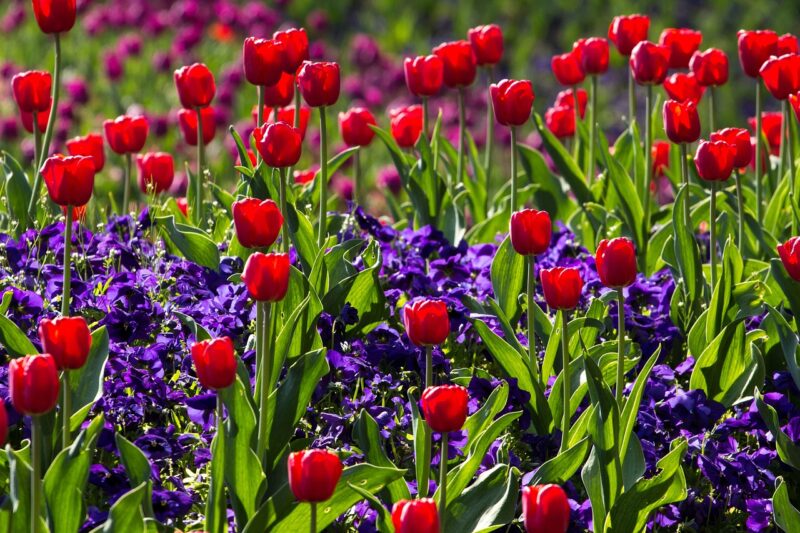
To fully appreciate the beauty of your tulip garden, consider several ways to enhance their display.
1. Combination with Other Plants
Tulips look stunning when combined with other spring-flowering plants. Here’s how to curate a complementary garden:
Companion Plants: Consider planting tulips alongside other bulbs such as daffodils, hyacinths, and crocuses. These pairings create a beautiful gradient of color and texture, showcasing the diversity of spring flowers.
Foliage Plants: To extend the beauty of your garden, combine tulips with foliage plants that flourish at the same time. Hostas, ferns, and ornamental grasses can provide a lush backdrop for your tulips.
2. Themed Displays
Creating themed displays can add interest to your tulip plantings. You could consider:
Color Themes: Choose a color palette for your tulips, whether it’s all pastels, bold primary colors, or a monochromatic vibe. This strategy creates harmonious and visually pleasing themes.
Seasonal Themes: Incorporate decorations or features that align with the season. For example, consider Easter decorations in the spring through fanciful cutouts or other colors that complement your tulips.
3. Location within the Landscape
The strategic placement of your tulip planting greatly impacts the overall aesthetic of your garden. Consider these aspects:
Garden Borders: Plant tulips along the edges of garden paths, borders, or walkways to create an inviting and organized flow through your outdoor space.
Highlighting Features: Use tulips to accentuate garden features such as fountains, mailboxes, or statues. Their bright blooms can draw attention to these focal points, enhancing the overall landscape design.
Caring for Your Tulips Post-Planting

Once the bulbs are in the ground, proper care is essential for their successful growth and flowering.
1. Watering Needs
Tulips have specific watering needs that vary throughout their growth cycle:
Initial Watering: After planting, water the bulbs lightly to settle the soil. This helps with establishing roots but be cautious not to overwater.
Post-Bloom Care: After flowering, allow the foliage to die back naturally. This process stores energy in the bulb for next year’s growth. Continue watering the plants to keep the leaves green, feeding the bulb for future blooms.
2. Fertilization and Soil Health
A strong foundation leads to vibrant blooms. Consider the following fertilization tips:
Fertilizer Application: Apply a balanced, slow-release fertilizer in late winter or early spring before blooming occurs. A formula high in phosphorus, such as 5-10-10, supports root development and flowering.
Organic Matter: Incorporate organic matter like compost into the soil at planting time to enhance soil biology and nutrient availability throughout the tulip’s growing season.
3. Pest Control and Maintenance
Protecting your tulips from pests and diseases is crucial for a flourishing bloom:
Common Pests: Watch for damaging pests like aphids and slugs. Natural remedies such as neem oil or diatomaceous earth can help mitigate infestations.
Disease Prevention: Ensure good air circulation, avoid overcrowding, and monitor for signs of fungal diseases. If bulbs show signs of rot, remove them immediately to prevent spread.
Final Thoughts on Tulip Planting
Planting tulips can be a joyous and rewarding experience, and knowing where to plant them makes all the difference in their success. By carefully choosing the right location, ensuring suitable soil conditions, and applying thoughtful planting techniques, you can create an awe-inspiring display of tulips in your garden. From their stunning visual appeal to their ease of care, tulips are a wonderful addition to any landscape.


